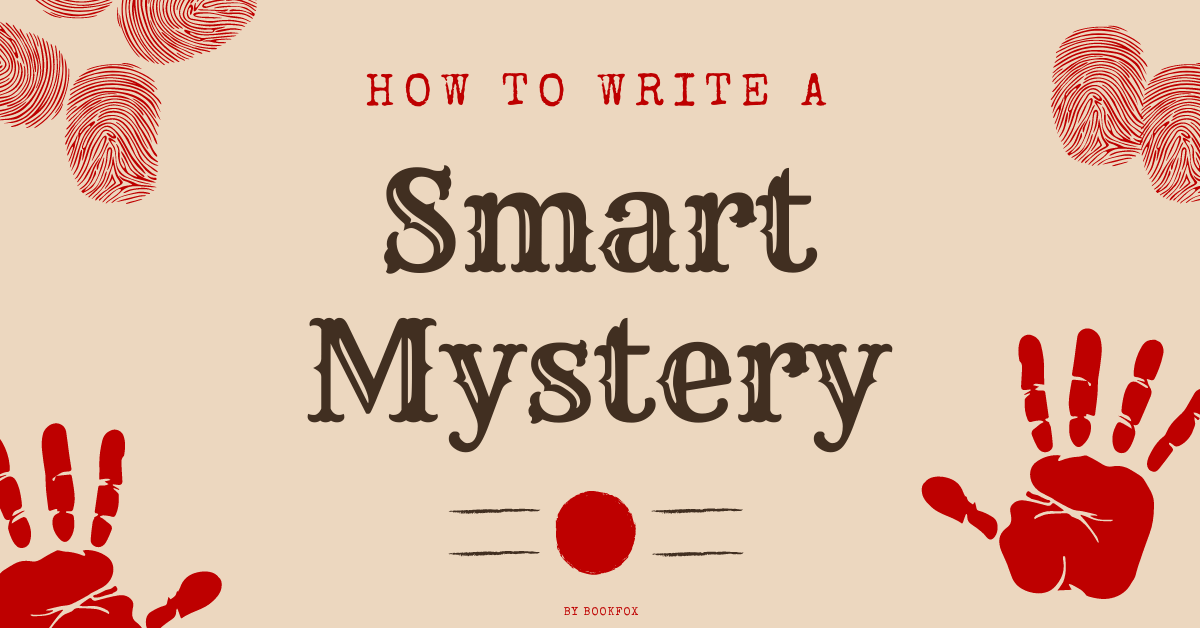 Mystery fiction is a plot-driven genre. Because of this, both plot and character must be handled differently in mysteries than in literary fiction.
Mystery fiction is a plot-driven genre. Because of this, both plot and character must be handled differently in mysteries than in literary fiction.
This does not mean that character—or any other element of fiction—can be neglected in a mystery story.
Nor does it mean that a formulaic plot is enough to “drive” a mystery story.
As Raymond Chandler wrote:
“The detective story, even in its most conventional form, is difficult to write well.”
Too many mystery writers simply imitate genre tropes. What’s worse, they imitate TV shows. The result is clichéd, uninteresting mysteries.
There are steps you can take to successfully write original mystery stories. You can create smart mysteries by focusing on key elements—such as causal plots, specific settings, and limited POVs—as you build your story.
1. Create Cause & Effect Plots
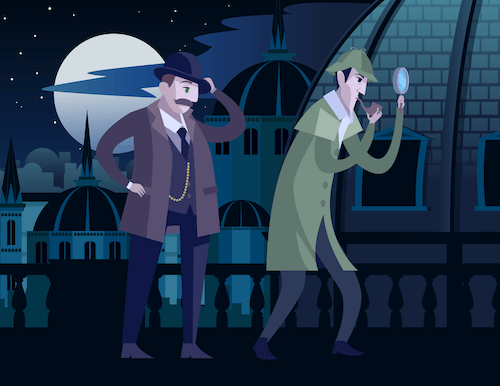
What is plot?
E.M. Forster makes a distinction between “story” and “plot.” While both provide a “narrative of events,” plot emphasizes cause and effect.
Forster offers this example:
“The King died and then the queen died,” is a story. “The king died, and then the queen died of grief is a plot.”
In a well-plotted mystery story, you should to be able to identify how every event is caused by a preceding event. These events form a cause and effect chain.
Cause and Effect Chains Lead to Resolution
Every action taken by your main character should contribute—directly or indirectly—to the plot’s resolution.
The Adventure of the Speckled Band was one of Arthur Conan Doyle’s own favorite Sherlock Holmes stories. In the story, widower, Dr. Roylott, schemes to murder his stepdaughters so he can inherit their mother’s fortune.
This is a locked-room mystery. Roylott is clearly the murderer, but no one knows how he murdered his stepdaughter in a locked bedroom.
Roylott’s method is revealed when he is killed by the same venomous adder he used to murder Helen’s sister. Roylott’s death comes about through the following chain of events:
Helen brings the case to Holmes.
↓
Holmes and Watson travel to the manor and stake out Helen’s bedroom.
↓
The detectives are in the bedroom when Roylott sends his snake in through a vent.
↓
Holmes hits the snake with his walking stick.
↓
The snake to race back through the vent toward Roylott, killing him.
Afterward, Holmes and Watson review the chain of causality:
“I heard the creature hiss as I have no doubt that you did also, and I instantly lit the light and attacked it.”
“With the result of driving it through the ventilator.”
“And also with the result of causing it to turn upon its master at the other side.”
If Roylott had simply been killed by his snake while handling it, the story would have ended the same way. The murder method would still be revealed. The killer would still experience a fitting death. Helen would still be spared.
However, such a plot would not require the intervention of Holmes. There would be no adventure. A strong causal chain will ensure you provide an adventure for your reader.
Avoid this Mistake: Don’t rely on coincidence.
Coincidences are events which coincide without causality. Using a coincidence in your plot will undermine your chain of cause and effect.
Charting Cause and Effect

The designers who made early LucasArts adventure video games like The Secret of Monkey Island used “Puzzle Dependency Charts” to visualize the steps needed to move forward.
For example, a player might need to complete the step of “Open Basement Door” to proceed. “Open Basement Door” is dependent on “Unlock Basement Door,” which is dependent on “Find Key Behind Plant.” Because “Open Basement Door” is also dependent on “Oil Hinges,” there is a separate, parallel line for that dependency.
Charting these steps helped the designers make sure the games didn’t become “too linear or too unwieldy.”
Create Your Own Charts
Charting the causal relations in your story will help you manage your plot. Simple, hand-drawn boxes and arrows will do the trick.
You can—and probably will—modify this chart as you write. (Some people prefer using white boards over pen and paper for this reason.)
Keeping your plot’s causality in mind will keep you from writing scenes which don’t actually result from previous events. This is how your avoid plot holes.
Exercise: Reverse-Engineer a Causal Chain
- Reread a mystery story you admire.
- Draw a box at the top of a blank sheet of paper. Summarize the story’s resolution here.
- Working backwards through the story, use arrows and boxes to chart the causal chain which led to this resolution. Keep working until you hit the inciting action which set the chain in motion.
After studying what the causal chain of a successful story, you will be ready to chart the causal chain for your own story.
2. Add Obstacles to Your Plot

A detective’s goal is to solve a crime. A criminal’s goal is to get away with a crime. A writer’s goal is to create an exciting story for their reader.
An exciting mystery story is not about solving a crime. It is about the struggle to overcome obstacles on the way to solving a crime.
The literary critic D.A. Miller put it this way:
“While the representation shows the detective hastening, the construction shows the novelist stalling.”
You use obstacles to stall the plot.
A story about a detective who finds every piece of evidence they need will not be very exciting. It will also be over quickly. The way to develop this story is to add obstacles such as:
- Evidence is hidden from the detective.
- The detective is attacked, arrested, or detained before they can pursue a piece of evidence.
- Someone plants false evidence to mislead the detective.
- Somethings happen to an informant before the informant could convey information to the detective.
- A pressing personal matter prevents the detective from following up on a lead.
Because obstacles produce delay, they are also at the heart of creating suspense in a story.
Build Obstacles from Competing Character Motivations
A random obstacle might feel forced to a reader. However, an obstacle resulting from another character’s logical actions—based in greed, rivalry, a desire to not be caught, etc.—will work within the world of your story.
About two-thirds of the way through Dashiell Hammett’s novel The Maltese Falcon, P.I. Sam Spade is starting to piece things together. He has finally gotten a powerful man named Gutman to reveal information about the shadowy treasure hunt behind recent crimes.
Then, just as Spade is making progress, Gutman drugs his drink.
The next day, Spade recounts the situation with Gutman:
“He wants something he thinks I can get. I persuaded him I could keep him from getting it if he didn’t make the deal with me before five-thirty. Then—uh-huh—sure—it was after I’d told him he’d have to wait a couple of days that he fed me the junk. It’s not likely he thought I’d die. He’d know I’d be up and around in ten or twelve hours. So maybe the answer’s that he figured he could get it without my help in that time if I was fixed so I couldn’t butt in.’”
From Spades’ perspective, Gutman’s actions are logical moves in his greed-driven quest to obtain the jeweled-falcon statue.
From Hammett’s perspective, Gutman’s actions add half a day of plot complications.
3. Define the Central Crime
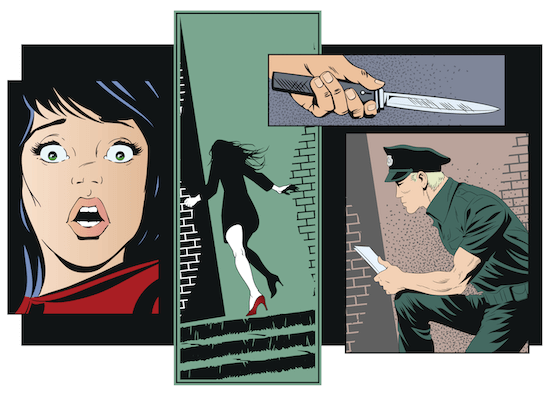 A good crime story needs a good crime.
A good crime story needs a good crime.
In a cozy, the crime may have already occurred before the story even starts. In a thriller, the crime may be unfolding throughout novel. In a heist novel, the criminals might plan the crime early in the book, and attempt to execute it later. Regardless, the narrative revolves around the commission of a crime.
There is nothing more disappointing for a reader than reading through a compelling mystery novel, only to find an underwhelming or implausible solution revealed at the end.
To avoid this, you need to work out every detail of the crime. Whether it’s murder, theft, fraud, or something else, you need to know information about the crime:
- What was the goal of the crime?
- Who were the victims?
- Who were perpetrators?
- What were the motivations?
- Who were the witnesses to the crime? What did they see?
- How far ahead of time was the crime planned?
- What was the exact timeline of the crime?
- What was the physical layout of the crime scene?
Even if you don’t include all of these details in the story itself, knowing them will help you ensure that your plot can resolve in a satisfying and logical manner.
Exercise: Build an Evidence Wall
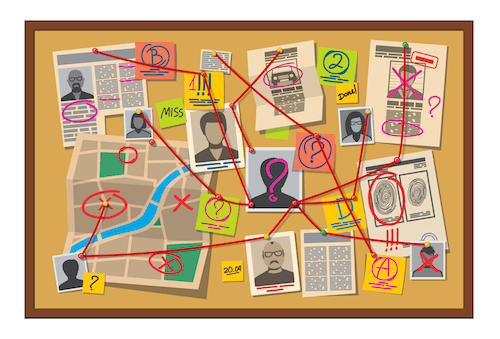
If you have ever watched a detective TV show, you have probably scene an evidence wall (aka a crazy wall).
Evidence walls are created (as the name states) by attaching pieces of evidence (like photos or maps) to a wall. Connections are drawn using markers or lengths of brightly-colored string.
Some shows use evidence walls to visually convey information to characters and viewers. Other times, evidence walls are used to comedic effect to illustrate that a character is becoming fixated on a crime. You can use an evidence wall to develop your story’s central crime.
The playfulness of an evidence wall is helpful if you are stuck on the details or logistics of the crime. You can draw, print, or cut out pictures to use. Images on a wall more tangible than a manuscript page, so it can be a great way to get the juices flowing.
Visualizing the moving parts of a crime spatially will also help you understand the crime more clearly. In turn, this will help you explain it more clearly on the page.
Rip from the Headlines
 You don’t have to invent every crime from scratch. There is no shortage of strange and intriguing crime in the world.
You don’t have to invent every crime from scratch. There is no shortage of strange and intriguing crime in the world.
You can find material in the crime section of local newspapers. Keep a folder of interesting crime articles. Go back through it when you are developing a story.
Ottessa Moshfegh’s crime novella McGlue was inspired by an 1851 newspaper article about the acquittal of a sailor who stabbed a man to death in the port of Zanzibar.
Moshfegh discussed finding the article in an interview:
“There was the whole book right there: the character, the plot, the deformed language. I felt like I’d struck gold.”
Moshfegh is far from the only crime author to “strike gold” with a news source. James Cain’s Double Indemnity was inspired by a murder trial he covered as a reporter. Even Dostoyevsky’s Crime and Punishment was inspired by a news story.
4. Choose the Right Role for Your Main Character
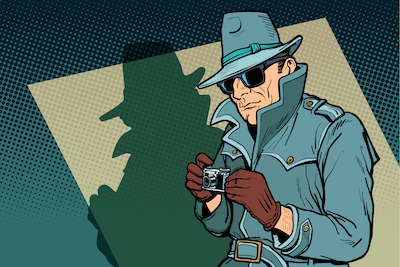 A crime is going to look very different to the person committing the crime, to the victim of the crime, and to the person investigating the crime.
A crime is going to look very different to the person committing the crime, to the victim of the crime, and to the person investigating the crime.
The structure of your story depends largely on who you choose as your point-of-view character.
Some sub-genres work better with particular types of POV characters. It is more important, though, to figure out the best POV character for the specific story you are trying to tell.
These are the most common main character roles in mystery and crime stories:
1. Professional Detectives
There are two main types of professional detectives in mysteries:
Police (State Agents)
Police detectives are obvious main characters for mysteries, as it is their job to investigate crimes. This category includes local and federal law enforcement, or any other form of official investigator.
Examples of famous police detective characters include:
- Inspector Bucket in Charles Dickens’ Bleak House (Metropolitan Police)
- Steve Carella in Ed McBain’s 87th Precinct series (the fictional Isola Police Department)
- Grave Digger Jones and Ed Johnson in Chester Himes’ Harlem Detective series (New York City Police Department)
- Commissaire Jules Maigret in Georges Simenon’s Maigret series (Brigade Criminelle de Paris)
Stories following official police investigations are called Police Procedurals.
These works often engage with the protocols of official investigations and prosecutions. Key researched details can provide verisimilitude, but too much bureaucratic detail can bore a reader.
Police exist within government structures and answer to political authority. They can be useful characters if you want to address social issues such as corruption, abuse of power, or political unrest. In Aya De León’s recent novel A Spy in the Struggle, for example, an FBI agent confronts the agency’s persecution of community activists.
Private Investigators (Non-State Agents)

Private Detective stories are a sub-genre of their own. They are perhaps the most iconic type of mystery story.
Private Investigators (aka P.I.s or Private Eyes) are attractive main characters. They provide the same professional investigative framework as police detectives, but are unencumbered by institutional obligations. Because of this, they have more room for idiosyncratic characterization, original backstories, and creative situations.
This dynamic goes back to the Sherlock Holmes stories. Inspector Lestrade, as a Scotland Yard detective, leads official investigations. Holmes—who is an independent “consulting detective”—functions more flexibly.
20th century hard-boiled writers like Hammett and Chandler perfected the tough, cynical P.I. role with characters like Spade and Philip Marlowe.
These characters are great models, but they are by no means ready-made templates. The biggest source of cliched private detective stories is writers simply imitating the speech and mannerisms of mid-century hard-boiled detectives (from books or film noir adaptations), rather than developing their own original characters.
Sara Paretsky’s contemporary V. I. Warshawski mysteries are engaging because Warshawski is a fully-drawn character whose complex personal and political history informs her detective work. Likewise, Jonathan Lethem’s novel Motherless Brooklyn is narrated by an under-estimated, orphaned detective with Tourette’s named Lionel Essrog, who subverts the typical image of a P.I.
Even when you are using an established character role, characterization work remains important.
Upside: Depending on the setting of your story, the private detective role might also allow you to create detectives who would have been excluded from the official police department due to their identify (gender, ethnicity, etc.).
2. Amateur Detectives
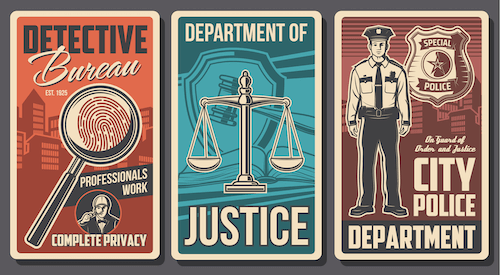
A character does not need to be a professional detective to act as the detective in your story. In fact, any character you create can be a detective if they find themselves faced with a crime.
Different types of amateur detectives appear in different sub-genres:
Cozies
Cozy mysteries often feature amateur detectives in small towns. Likely as not, they are solving crimes they are safely-distanced from.
Many of Agatha Christie’s stories and novels, for example, feature Ms. Marple, an elderly woman who solves crimes in the small village of St. Mary Mead. She uses logic, attention to detail, and old-fashioned common sense to solve crimes which others are unable to.
Because of their limited settings, non-expert investigative techniques, and logic-based conclusions, cozies often give the reader the chance to solve the crime for themselves. This helps establish reader buy-in. The reader, in a sense, becomes a fellow amateur detective.
Thrillers
When they appear in thrillers, amateur detectives often find themselves wrapped up in violence and intrigue. Placing a non-professional character in a life-or-death struggle creates opportunities for action and suspense.
The main characters of Joe R. Lansdale’s Hap and Leonard series are a pair of working-class Texan buddies. The have complicated histories with incarceration, military service, and violence (and non-violence), but they are in no way professional detectives. Instead, they are pulled into mystery cases due to their personal relationships with people who are victims of crimes, or falsely accused of crimes.
The two men are driven by their personal understandings of justice.. They are deeply loyalty to each other and to the victims and underdogs they help. This creates high emotional stakes for their cases.
3. Criminals
 Criminals are some of the most interesting (and fun) characters to write. Writing from the perspective of the person committing a crime offers an ethical and psychological complexity not always found in detective stories.
Criminals are some of the most interesting (and fun) characters to write. Writing from the perspective of the person committing a crime offers an ethical and psychological complexity not always found in detective stories.
This approach is used in a number of sub-genres, ranging from hard-boiled novels like Double Indemnity to psychological thrillers like Patricia Highsmith’s Ripley series.
In The Talented Mr. Ripley, Highsmith uses third-person narration limited to Tom Ripley. Through this POV, the reader is exposed to his thought process as he conceives of his first murder:
“He wanted to kill Dickie. It was not the first time he had thought of it. Before, once or twice or three times, it had been an impulse caused by anger or disappointment, an impulse that vanished immediately and left him with a feeling of shame. Now he thought about it for an entire minute, two minutes, because he was leaving Dickie anyway, and what was there to be ashamed of any more?”
The central crime of the novel—the murder of Dickie Greenleaf—is so chilling because we have seen every one of the killer’s thoughts and actions in such close detail. Hearing about the murder from an investigating detective’s professional distance would remove the fascinating intimacy.
Criminals Don’t Have to be Villains
Many novels, such as Elmore Leonard’s Out of Sight, feature sympathetic characters who break the law, but possess understandable motivations.
The opening lines of Out of Sight introduce the reader to Jack Foley, a convicted bank robber:
“Foley had never seen a prison where you could walk right up to the fence without getting shot. He mentioned it to the guard they called Pup, making conversation: convict and guard standing in a strip of shade between the chapel and a gun tower, red-brick structures in a red-brick prison, both men looking toward the athletic field.”
These two sentences do a lot of work:
- The first half of the first sentence tells us that Foley has been a lifelong outlaw, as he has seen the insides of many prisons.
- The second half of the first sentence slides into colloquial usage of the second person, forcing the reader to identify with the dangers of being incarcerated. Leonard could have written “a prison where he could walk” with equal clarity, but the “you” forces the reader to empathize with Foley.
- The beginning of the second sentence shows that Foley is an affable guy, willing to chat with anybody.
- The middle of the second sentence illustrates the absurd reality of the roles of “convict” and “guard.”
- The end the second sentence establishes the prison setting, helping the reader to understand how it feels to live surrounded by red-brick walls.
The key to writing criminal characters—as to writing most characters—is compassion. There must be more to a character than their worst actions.
4.) Victims
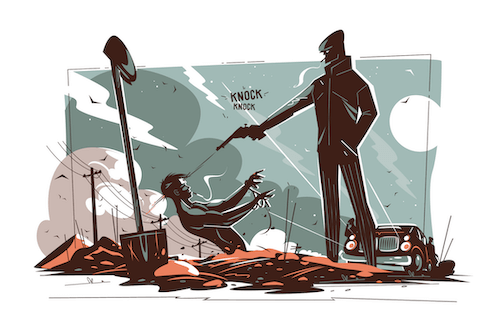 Victims can be more than passive, secondary characters in mysteries. If you are only using a victim’s experience as a plot point, you are missing an opportunity.
Victims can be more than passive, secondary characters in mysteries. If you are only using a victim’s experience as a plot point, you are missing an opportunity.
Victims have the most intimate perspective on a crime. They carry the memory and trauma of that crime around with them. Very likely, they will be more invested than any detective in solving the case.
The elderly narrator of Louise Erdrich’s story Disaster Stamps of Pluto recounts the long-ago quintuple-murder of a local family. Only a seven-month-old baby survived the massacre. Over the course of the story, the reader learns that the narrator was herself this baby.
Decades later, she is able to figure out who murdered her family. Her position as a child victim means that her life story and the crime story are intertwined. This scope allows for a mystery which builds and resolves over a much longer timeframe than a typical mystery.
5.) Combinations of these Roles
Complex characters might not fit neatly into one of the above boxes. Don’t force them to.
When you consider your main character’s role in your story, you are determining what their relationship to the story’s central crime is. This relationship can be multi-faceted.
The narrator of Jim Thompson’s novel The Killer Inside Me, Deputy Sheriff Lou Ford, is both a policeman and a vicious criminal. The combination of sociopathic violence and governmental authority is what makes Ford such a terrifying and memorable character.
Tip: Reuse Characters in a Series
Mystery authors often write series of stories or books in which the same main character tackles different cases.
Walter Mosley has written over a dozen Easy Rawlins novels. Devil in a Blue Dress was the first one published. However, Mosley had actually already developed the characters of Easy and his outlaw friend Mouse in the coming-of-age manuscript Gone Fishin’, which was published later.
Each Easy Rawlins mystery contains a very different case. Between them, time moves forward, so we see Easy in different stages of life, and the African American communities of California in different historical moments.
Once you have a solid character, you can continue to use them in different projects to build your craft and body of work. You can try out different plots, forms, and sub-genres without having to develop a new character.
5. Maintain Mystery by Limiting POV
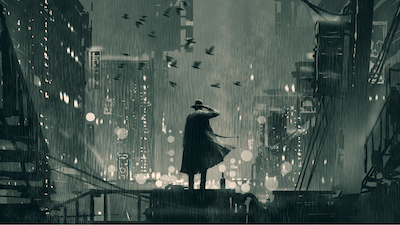 No matter who your main character is, you should limit narration to that character’s POV. This might be done with first-person or third-person limited narration, depending on what works for your story.
No matter who your main character is, you should limit narration to that character’s POV. This might be done with first-person or third-person limited narration, depending on what works for your story.
Avoid forms of narration, such as third-person omniscient or free indirect speech, which give too wide of a view.
The word “mystery” comes from the Latin “mysterium,” referring to something kept hidden or secret. If you make too much information available to the reader too quickly, you undermine the mystery.
In a scene in Mosley’s Devil in the Blue Dress, the narrator, the private investigator Easy Rawlins, is interrogated by police:
“What do you know about this Richard McGee?” Miller asked me.
When I looked up I saw them searching my face for the truth.
“Who?” I said.
“You heard me,” Miller said.
“I don’t know who you said.” I was stalling for time to figure out what they knew. Mason laid a heavy hand on my shoulder.”
The tension in the scene comes from the fact that Easy and the policeman do not have the same information. They both want to know what the other knows, without revealing too much. The scene works for the reader because they are in the same position as Easy. They know everything he knows, but don’t know what the police know.
As a writer, you know every aspect of your story. At each stage in the plot, you want to carefully control what your character knows and what your reader knows. Readers are kept on the hook by their desire to learn more.
Tip: Use Interviews to Bring in Other Character’s Voices
Interviews and interrogations are a natural part of a mystery story. It is fitting that a detective will ask (or pressure) witnesses and suspects to tell their stories.
You can use interview scenes as opportunities to bring in passages of other character’s first-person narration without breaking from your limited POV.
6. Locate Your Setting
 Mysteries are very external. Unlike some more cerebral form of literary fiction, crime fiction relies on physical action occurring in the physical world.
Mysteries are very external. Unlike some more cerebral form of literary fiction, crime fiction relies on physical action occurring in the physical world.
Even psychological thrillers are rooted in real-world physical violence. Or, at the very least, the threat of real-world violence.
For this reason, consideration of physical setting is very important. Many of the hallmarks of mystery fiction rely on movement through physical space:
- The concealment and discovery of bodies.
- The concealment and discovery of evidence.
- Violent confrontations.
- Pursuit by law enforcement (or others).
- Escape from confinement.
- Theft of objects.
For scenes featuring these actions to be convincing, they need to be located in fully-drawn, detailed spaces.
Setting Enables Plot
David Goodis’ novels were one of the main inspirations for Film Noir. The best of Goodis’ books are set in his hometown of Philadelphia.
Goods sets the scene in the opening paragraph of The Moon in the Gutter:
“At the edge of the alleyway facing Vernon Street, a gray cat waited for a large rat to emerge from its hiding place. The rat had scurried through a gap in the wall of the wooden shack, and the cat was inspecting all the narrow gaps and wonderings how the rat had managed to squeeze itself in. In the sticky darkness of a July midnight the cat waited for more than an hour. As it walked away, it left its paw prints in the dried blood of a girl who had died there in the alley some seven months ago.”
This opening paragraph does a lot of foundational work for the rest of the novel:
- It introduces Vernon Street as the center of the book’s action (the alley faces Vernon).
- It establishes the slum conditions of the waterfront neighborhood (the wooden shack).
- It introduces the season and weather (a sticky July night).
- The city’s alleys are connected to predatory violence (the cat stalking the rat).
- The city’s streets literally run with blood (Kerrigan’s late sister’s blood is still visible).
Goodis’ 1950s pulp prose may be a bit over the top for contemporary readers. What’s important, though, is that he sells the world of his story. The events that come in the rest of the novel feel not only plausible but logical.
Observe Your Own Town
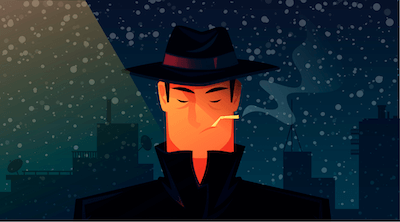
Mid-20th century detective writers like Goodis and Chandler wrote effective settings because they were describing the places they knew well. They certainly mythologized their towns, but they were building from an observable world.
Contemporary writers sometimes try to copy these mythologized settings, rather than create their own settings. This leads to descriptions which lack credibility.
You are best off writing about a place you know. It doesn’t matter if you don’t live in San Francisco or New York. Any city, neighborhood, or town you know well can serve as a crime setting. The New York Times round-up of “The 10 Best Crime Novels of 2020” included books set in places ranging from Sweden, to small towns in Tennessee and Georgia, to Atlantic City.
Exercise: Go on a Stakeout
Sit down in a local diner for an hour. Make sure you get a window booth with a view of the street. Open your notepad, and pretend you have been tasked by a detective agency to stakeout the street:
- Observe people. How are they dressed? What are they doing? How quickly are they moving? Does anyone approach an acquaintance or stranger?
- Observe the terrain. Are there trashcans, newspaper boxes, street lamps, billboards, or other landmarks? What does the pavement look like—is it cracked, potholed, newly-paved, shiny with rain?
- Assess surveillance: Do police cars pass by? Do businesses have security cameras? Which windows have a view of the street?
- Locate escape routes: Which direction does the road go? Are there any bus or subway stops? Are there alleyways or yards to run through?
Research a Setting
You might want to write your own novel set in 1930s California, not the time and place where you live. For that matter, you might want to write a mystery set in 16th century Kiev. Go for it. Historical mysteries are a great genre.
However, make sure that you are working in specific historical setting, not a general idea of one. The only way to do this is through research.
For instance, as modern policing is less than a few centuries old, projecting a contemporary police detective role into a 16th century social context wouldn’t make much sense.
Because, historical mysteries lie at the intersection of the mystery and historical fiction genres, you will have to draw on tools from both genres.
The extra work can be well-worth it. Caleb Carr’s novel The Alienist was set a century before its publication, in 1890s New York. The city was rapidly growing and changing in this era. Theodore Roosevelt was the commissioner of the NYPD. This context allowed Carr to come up with a new take on the hunt-for-a-serial-killer thriller.
Use a Confined Setting
Another strategy for locating a mystery story is to create a very limited setting. If your story is confined to an island, building, or vessel, you don’t have to worry about an entire city. Further, limited settings can pressurize a situation, creating opportunities for conflict and action.
Although most of Hammett’s stories take place in urban environments, one of his most widely read short stories takes place on an island off the California coast. In The Gutting of Couffignal, the P.I. known only as the Continental Op is hired to guard a fancy wedding.
Naturally, heavily-armed robbers come for the wedding gifts. The setting becomes integral to the heist plot. The Op explains:
“Whoever planned the job knew the island—not fairly well, but every inch of it.”
A limited setting often works best for the limited page-length of a short story. That being said, Agatha Christie’s novel Murder on the Orient Express takes place entirely on an inter-continental train. She makes the most of the confined setting to include a full cast of suspects.
7. Find the Right Length for Your Mystery
 The preceding steps apply to mysteries of all lengths. However, scale does change things. Once you start to develop a mystery, you will have to determine the right form for it.
The preceding steps apply to mysteries of all lengths. However, scale does change things. Once you start to develop a mystery, you will have to determine the right form for it.
Deciding factors might include:
- How complex is the mystery (ie. one murder vs. a series of murders?)
- Are you relying on one main plot twist?
- What is the span of time and geography?
- How many characters do you need to make your story work?
- Does the reader need a lot of main character backstory?
You don’t want to over-pack a short story with a novel’s worth of characters and plot points. Conversely, you can ruin a good short story idea but dragging it out into a slow-moving novel plot.
What are the Options?
The three main forms of crime fiction for contemporary publishing markets are:
1.) Novels
Length
The Mystery Writers of America counts everything over 22k words as a novel, but most crime novels published these days will likely be more in the 60k to 90k word range. This depends partly on sub-genre: An international thriller with multiple settings, for instance, will likely be on the longer end.
Golden-age mystery novels were often much shorter than 60k words, but publishing has changed since then. That being said, some indie presses and e-book imprints are interested in shorter novels.
Because mystery novels are built around the central causal chain, readers expect them to be leaner and quicker-paced than other types of novels.
Structure
Detective novels, in particular, have room for complicated and winding cases, multiple parallel and interwoven cases, and cases which lay dormant before new evidence emerges.
Hard-boiled novels and other types of crime novels might center around a criminal situation a protagonist finds themselves in, rather than a case of detection. However, the same expectations of causality and movement remain.
The mystery novel form provides an opportunity to fully build out a setting that a reader can escape into. As part of establishing the world of the novel, it is a good idea to set the level of action and violence early in the novel. A reader can’t be expected to wait 150-pages to find that a thriller does, in fact, contain thrills.
Novels also allow room for a larger cast of characters than short stories. Secondary characters—especially underworld characters—can add a lot to the texture of a mystery novel. A broader cast provides more suspects, and resultantly more plot opportunities.
Many presses and imprints focus on publishing novels in various mystery/crime sub-genres.
2.) Short Stories
Short stories are the heart of the mystery genre. The mystery story developed over the course of a century, in the pages of magazines like The Strand and Black Mask. There are many solid markets publishing short mystery stories today.
The word count of a mystery short story will vary by market. Ellery Queen Mystery Magazine’s “preferred range” of 2,500-8,000 words is a typical guideline.
Mystery short stories are often the perfect length for one self-contained case. There is room to establish a main character, to define a complex crime, and to encounter a few well-placed obstacles. At the same time, the form is still compressed enough to offer a reader the immediate satisfaction of following a plot to a relatively quick resolution.
3.) Flash Fiction
Flash Fiction stories are generally one-thousand words or less. Examples of flash crime fiction can be found in the anthology Tiny Crimes, or the webzine Shotgun Honey.
Flash can be a great way to hone your mystery plotting. Because of the compressed space, you can bring a causal chain to a resolution very quickly. There isn’t a lot of room for digressions or red herrings, so you have to make sure every step locks into place.
Flash fiction pieces usually only allow space for one big plot twist. An idea that feels one-note in a long story or novel might work in a flash piece. On the other hand, if an idea outgrows the flash form, you can always expand it into a longer form.
The best thing about flash crime fiction is that its length makes it a very manageable form. You can write a flash mystery today, using the steps above.
Guest Author:
Ben Nadler is the author of the novel The Sea Beach Line. He is currently a Ph.D. candidate in English at SUNY Albany.
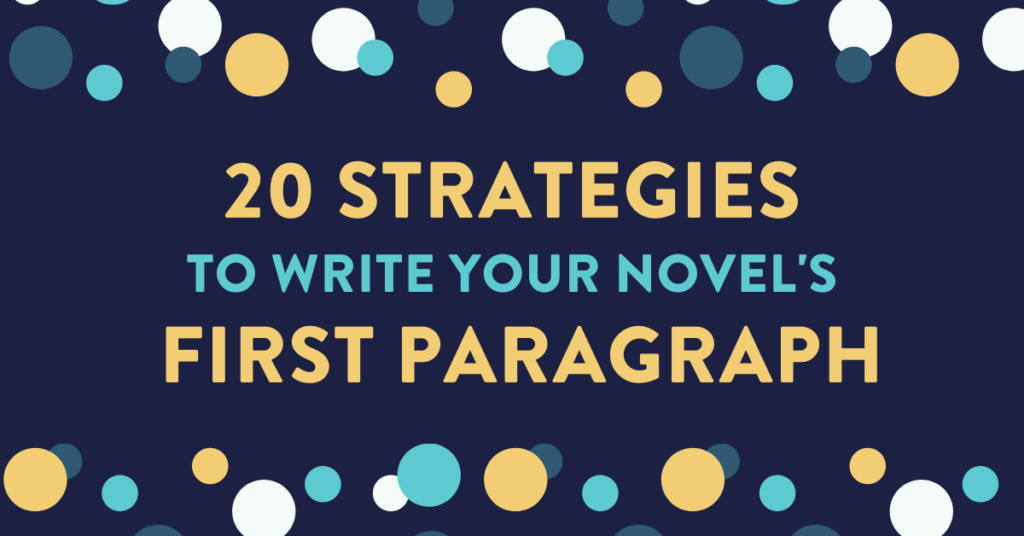
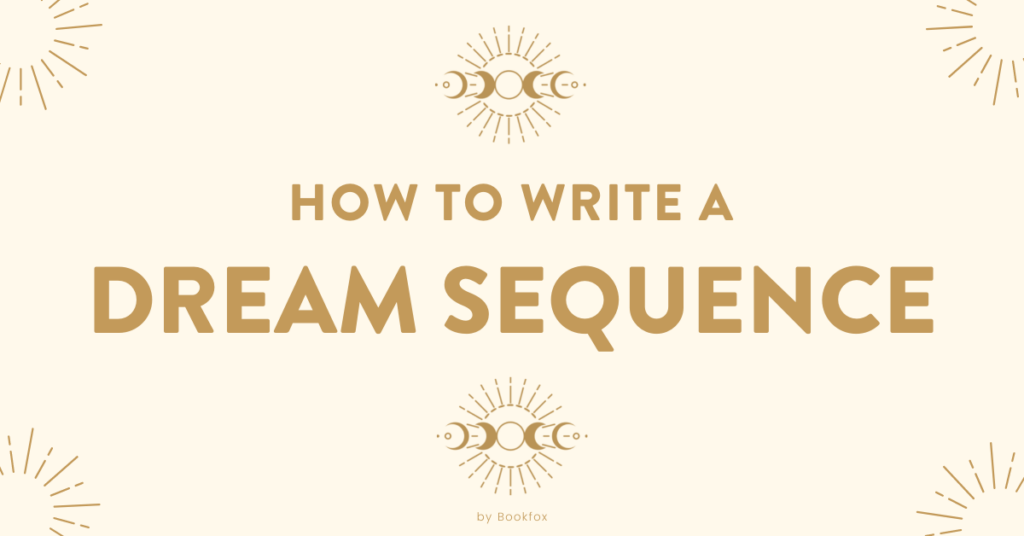

2 comments
I’ll reorganize the text from this section and read it thoroughly. I am working on 2 fictitious murders books -developing scenes and characters.
This article is so helpful as I work through the beginning of my cozy mystery. Thank you for the great examples.